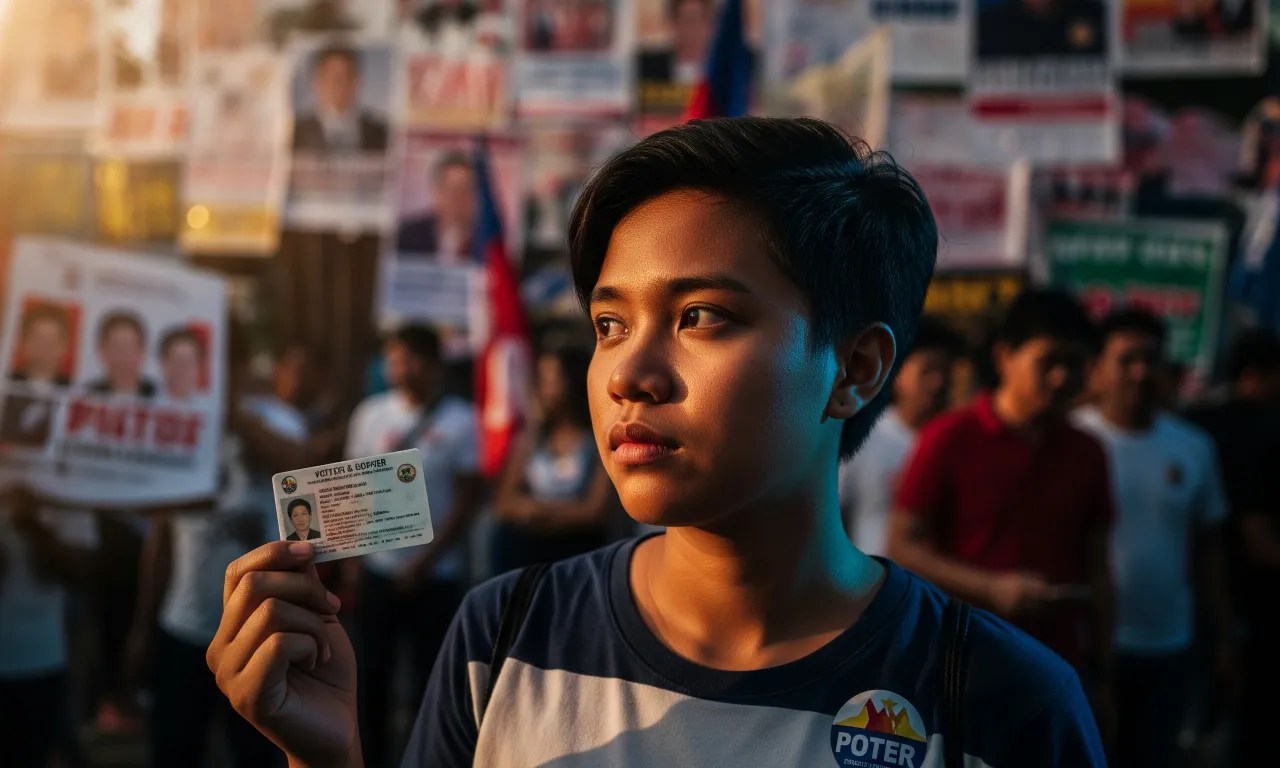A deep unease is spreading across the Philippine archipelago — a familiar Cold War anxiety reborn in the 21st century. The Enhanced Defense Cooperation Agreement (EDCA), signed to strengthen the nation’s defenses, has reopened old wounds about sovereignty and foreign military presence. As American troops and equipment reappear in Philippine bases, one chilling question echoes from Manila’s corridors of power to the fishing villages near EDCA sites:
- The Genesis of EDCA: A Pact for a New Era 📝
- The Geography of Concern: EDCA Sites & Strategic Importance 🗺
- Official Purpose vs. Public Suspicion: The Nuclear Elephant in the Room ☢️
- Echoes of the Past: Subic and Clark 📜
- The Legal Fortress: A Nation’s Stand Against Nuclear Arms ⚖
- Voices from the Ground: Local Communities React 🏘
- The Geopolitical Tightrope: Balancing Alliances and Sovereignty 🌏
- Reasons Filipinos Fear Nuclear Deployment ☢
- Frequently Asked Questions (FAQ) ❓
- A Call for Transparency and Vigilance 🕯
Are we becoming a staging ground for someone else’s nuclear arsenal?
This is not baseless fear. It’s rooted in history, in secrecy, and in the Philippine Constitution’s explicit ban on nuclear weapons. For military analysts, political observers, and anti-nuclear advocates alike, the debate is more than legal theory — it’s about the future security and independence of the Republic.
The Genesis of EDCA: A Pact for a New Era 📝
The Enhanced Defense Cooperation Agreement is not a stand-alone treaty. It supplements the 1951 Mutual Defense Treaty (MDT) and the 1999 Visiting Forces Agreement (VFA). Signed in 2014 under President Benigno Aquino III, EDCA’s stated goals are to:
-
Enhance AFP–U.S. interoperability in defense operations.
-
Strengthen external defense and maritime security.
-
Improve humanitarian assistance and disaster relief (HADR) response.
EDCA grants the U.S. access to “Agreed Locations” inside existing AFP bases for rotational troop presence, prepositioning of defense equipment, and facility construction. Philippine ownership remains, and the agreement forbids permanent U.S. bases — a reminder of the 1991 Senate vote that ended the Subic and Clark era.
Originally, five EDCA sites were named. In 2023, President Ferdinand Marcos Jr. added four more, triggering both strategic applause and political backlash.
The Geography of Concern: EDCA Sites & Strategic Importance 🗺
These nine EDCA sites are not random. They are positioned with precision — each serving a clear strategic role in regional security and power projection.
Table 1: EDCA Site Locations and Strategic Descriptions
| EDCA Site | Location | Strategic Description |
|---|---|---|
| Cesar Basa Air Base | Pampanga | Key air access to South China Sea |
| Fort Magsaysay | Nueva Ecija | Largest PH military reservation, AFP training hub |
| Antonio Bautista Air Base | Palawan | Near Spratly Islands for West Philippine Sea surveillance |
| Mactan-Benito Ebuen Air Base | Cebu | Central logistics and disaster response hub |
| Lumbia Air Base | Cagayan de Oro | Mindanao counterterrorism and security base |
| Naval Base Camilo Osias | Cagayan | Northeastern Luzon, close to Taiwan Strait |
| Lal-lo Airport | Cagayan | Northern Luzon airpower projection site |
| Camp Melchor Dela Cruz | Isabela | Army staging ground in northern Luzon |
| Balabac Island | Palawan | Monitors South China Sea–Sulu Sea shipping lanes |
The northernmost sites in Cagayan and Isabela are especially controversial, seen by many as a quiet preparation for potential conflict in the Taiwan Strait.
Official Purpose vs. Public Suspicion: The Nuclear Elephant in the Room ☢️
Official statements frame EDCA as purely defensive — about joint training, logistics, and humanitarian aid. Both governments insist no nuclear weapons will be stored in these locations, citing the 1987 Constitution and Article IV of EDCA itself.
Yet skepticism runs deep. Memories of nuclear ambiguity during the Subic and Clark years — when the U.S. neither confirmed nor denied nuclear deployments — still haunt the national consciousness. Without a clear inspection mechanism, critics argue the nuclear ban is unenforceable in practice.
Echoes of the Past: Subic and Clark 📜
From the early 1900s to 1991, Subic Bay and Clark Air Base were cornerstones of U.S. power in Asia. Declassified U.S. records confirm nuclear weapons were stored there during the Marcos dictatorship — a reality hidden from the public for decades.
The lesson is clear: secrecy breeds mistrust. The fear now is that EDCA sites, while technically “Philippine-owned,” could again host nuclear-capable assets without the nation’s knowledge.
The Legal Fortress: A Nation’s Stand Against Nuclear Arms ⚖
Table 2: Nuclear Weapon Prohibitions Under Treaties Signed by the Philippines
| Treaty | Key Provisions |
|---|---|
| NPT (1970) | Prohibits nuclear weapon possession by non-nuclear states |
| Treaty of Bangkok (1995) | Bans development, stationing, or control of nuclear weapons in SE Asia |
| TPNW (2017) | Outlaws possession, use, and hosting of nuclear weapons entirely |
Combined with Article II, Section 8 of the Constitution, these form a formidable legal shield — at least on paper. The loophole? The VFA grants no authority for Philippine forces to inspect U.S. military cargo, relying instead on diplomatic trust.
Voices from the Ground: Local Communities React 🏘
In EDCA host areas, reactions are mixed. Some residents see jobs, infrastructure upgrades, and faster disaster relief. Others see increased military risk and environmental concerns.
In Cagayan, protests and prayer rallies have pushed local leaders to question the wisdom of hosting two EDCA sites. Memories of US military pollution and past crimes by foreign troops remain potent arguments for opposition.
The Geopolitical Tightrope: Balancing Alliances and Sovereignty 🌏
Benefits of EDCA:
-
Deters aggression in the West Philippine Sea
-
Improves AFP modernization
-
Strengthens the U.S.–PH alliance under MDT
Risks of EDCA:
-
Entangles PH in potential U.S.–China war
-
Provokes Beijing’s diplomatic and economic retaliation
-
Erodes control over defense and foreign policy
For the Philippines, the challenge is strategic: ally with a superpower without becoming its pawn.
Reasons Filipinos Fear Nuclear Deployment ☢
-
Historical precedent of U.S. nukes in PH
-
No verifiable inspection mechanism
-
Strategic proximity to Taiwan and South China Sea
-
U.S. nuclear ambiguity policy
-
Escalating U.S.–China tensions
Frequently Asked Questions (FAQ) ❓
Q: Can the U.S. bring nukes into PH under EDCA?
A: Officially no, under the Constitution and EDCA text. In practice, lack of inspection authority leaves the issue unresolved.
Q: Are EDCA sites permanent?
A: No. They are rotational facilities inside AFP bases, with Philippine ownership intact.
Q: Could EDCA sites be used in a Taiwan conflict?
A: Strategically yes, especially those in northern Luzon. Officials deny any fixed war plans.
Q: How are crimes by U.S. troops handled?
A: Under the VFA, jurisdiction is shared but often favors U.S. custody until conviction.
Q: What makes nuclear verification difficult?
A: The absence of cargo inspections for visiting U.S. ships and aircraft.
A Call for Transparency and Vigilance 🕯
EDCA is a double-edged sword — it can strengthen national defense while exposing the Philippines to geopolitical crossfire. The only way to secure its benefits without paying the highest price is transparency.
The government must insist on clear verification measures, especially for nuclear prohibitions. Filipinos have the right to know what is on their soil — and in their skies. Sovereignty is not surrendered through signatures, but it can be lost through silence.




